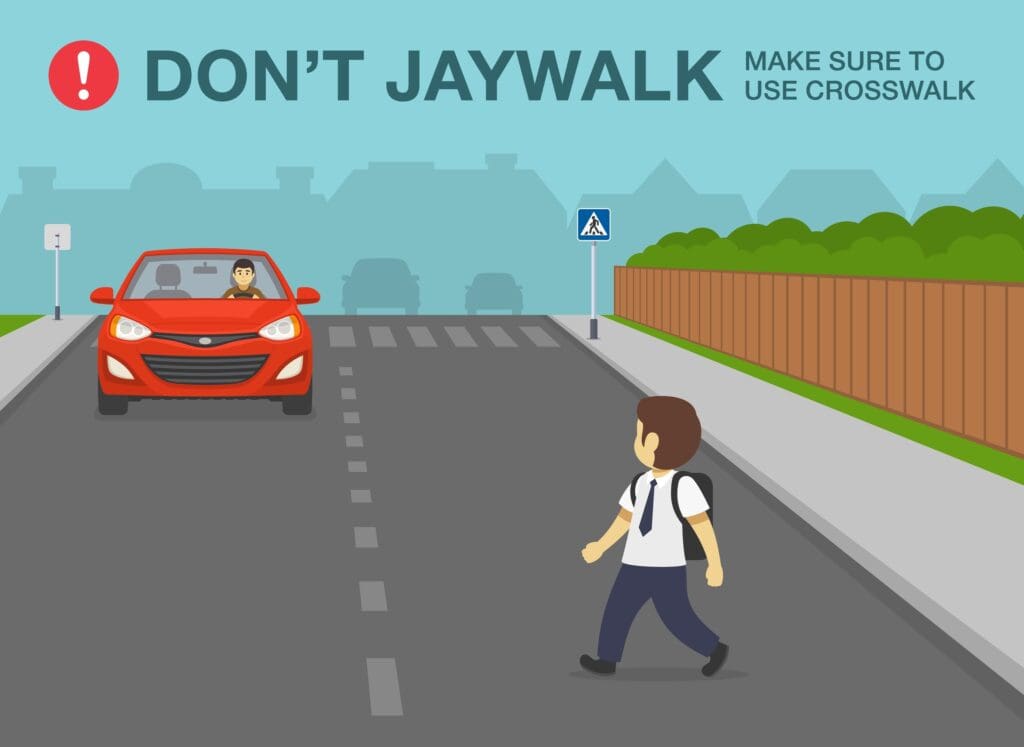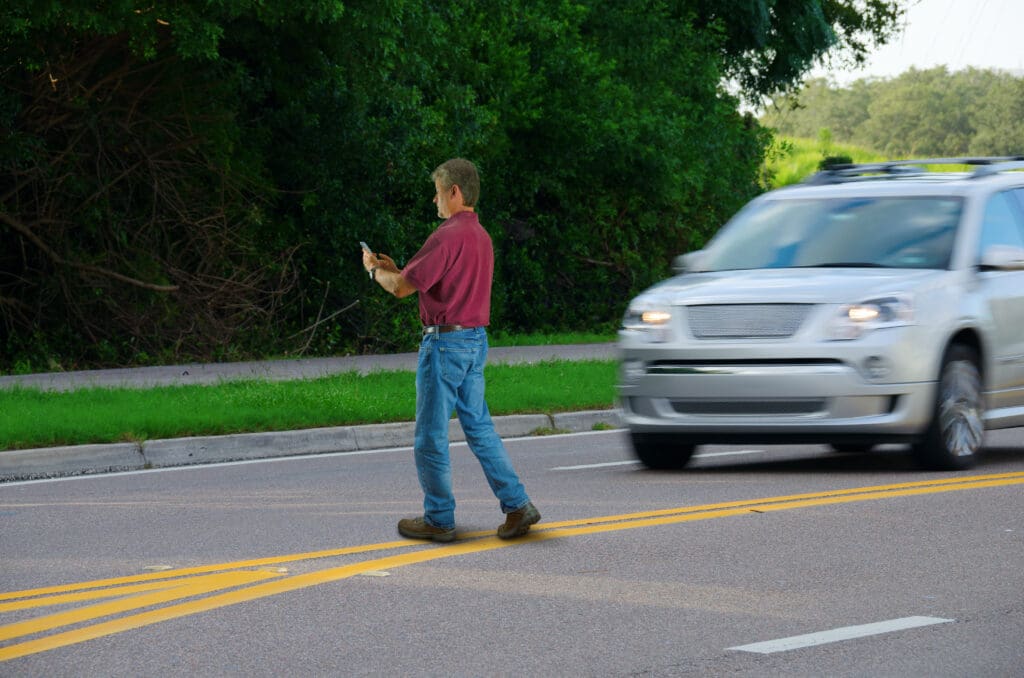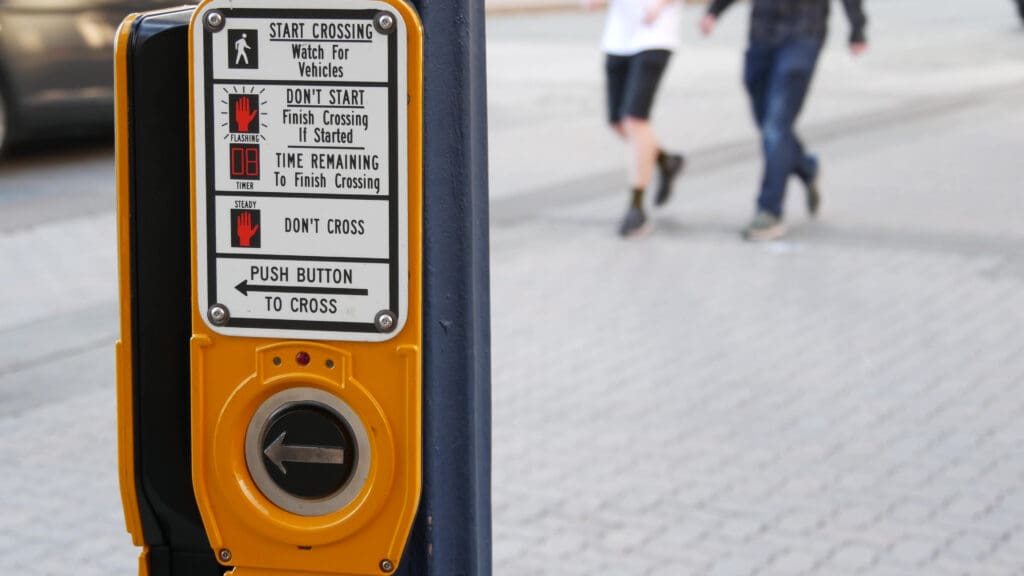Jaywalking Accidents and Contributory Negligence
Pedestrian fatalities as a result of motor vehicle accidents in the United States have risen dramatically in recent years. Oftentimes the blame for these accidents will fall on the driver of the vehicle, and justifiably so. Texting while driving and other distractions behind the wheel are also on the rise. It should come as no surprise that reckless and unlawful operation of a motor vehicle always poses a danger to travelers of all kinds. However, pedestrians bear a level of responsibility to ensure their own safety. One simple way to keep yourself safe when traveling on foot is to obey pedestrian right of way laws and avoid so-called “jaywalking.” Malloy Law wants to inform our community of the laws concerning pedestrians. We’ll also explain how jaywalking accidents may leave you without any means of recovering damages.
What is Jaywalking?
In brief; “jaywalking” is the act of crossing a street outside of designated crosswalks. This word can also refer to using a crosswalk in defiance of traffic signals. Jaywalking is generally a low-level criminal offense, often punishable by a small fine. However, these laws are generally unenforced, especially in dense urban areas, where it’s simply unfeasible to keep track of every pedestrian.
Pedestrian Right of Way Laws in Your Community
In Maryland, Virginia, and Washington DC, pedestrians are legally granted the right of way at a crosswalk. If there is a stoplight and an accompanying walk signal, pedestrians are expected to obey the signs and cross under the light to ensure their safety. But if there is no stoplight, drivers are expected to stop when approaching a crosswalk and allow any pedestrians to cross. Virginia residents should also note that their state laws forbid pedestrians from interfering with traffic in a dangerous way. This includes darting out in front of traffic. DC pedestrians also have the right of way in any situation where a vehicle is turning on a green light. The driver must stop and wait for drivers to vacate the crosswalk even under a green light.
Connecting Jaywalking Accidents and Contributory Negligence
We’ve previously written on Maryland and Virginia’s “contributory negligence” laws. Contributory negligence is a legal statue that may bar any recovery in a personal injury case if the injured party is found to be even partially responsible for their injury. These laws are stricter that the “comparative negligence” laws you’ll find in most US states. These laws can limit the amount of damages that can be recovered after an injury, in proportion to the degree that the injured party is adjudged to be responsible. But under a contributory negligence law, even partial responsibility on the part of the injured party may negate any chance of recovering damages.
So if a hypothetical pedestrian is hit by a car and seriously injured while jaywalking, it’s highly likely that they’ll be barred from recovery under these contributory negligence laws. Even if the driver of the vehicle was traveling in excess of the posted speed limit or disobeying traffic signals, it’s hard to argue that the pedestrian’s own unlawful conduct wasn’t a major contributing factor in their own injury. Jaywalking accidents, then, can be a major detriment to not only your health, but also your finances.
How Malloy Law Can Help
Jaywalking is often thought of as a “victimless crime.” But the decision to cross outside of sidewalks or against lights exposes pedestrians to serious potential risk. Any time or inconvenience saved by jaywalking is insignificant in the face of potential injury you may suffer. Malloy Law Offices would like to encourage all pedestrians to exercise caution and obey posted traffic signals. It’s the responsible thing to do.
If you or a loved one has been involved in a pedestrian motor vehicle accident, Malloy Law can help. Our firm is home to the DMV’s personal injury specialists and can navigate the unique complexities of your legal situation. We’re proud to employ an experienced and diverse team of attorneys that puts the needs of our clients first. We stress individual attention to each of our clients and a culture of empathy for the injured. Contact us today, so we can fight for you and help you recover from your jaywalking accidents.






